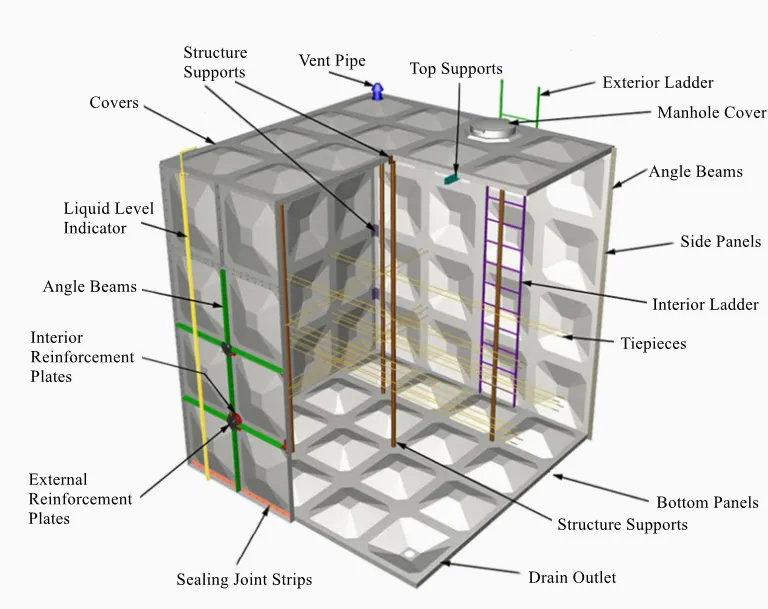loading...
- No. 9, Xingyuan South Street, Dongwaihuan Road, Zaoqiang County, Hengshui, Hebei, China
- admin@zjcomposites.com
- +86 15097380338
- Welcome to visit our website!
Advancements in Structural Applications of Fiber Reinforced Polymer Composites
Understanding Structural FRP Advancements in Composite Materials
Fiber Reinforced Polymer (FRP) has emerged as a transformative material in the field of structural engineering, offering a plethora of advantages over traditional construction materials such as steel and concrete. Composed of a polymer matrix reinforced with fibers like glass, carbon, or aramid, FRP exhibits remarkable strength-to-weight ratios, corrosion resistance, and design flexibility, making it an ideal choice for a wide range of applications.
Understanding Structural FRP Advancements in Composite Materials
In terms of mechanical properties, FRP materials boast high tensile strength, making them suitable for tension applications. Their lightweight nature also facilitates easier handling and installation, reducing labor costs and construction time. For instance, in retrofitting projects, FRP can be applied to existing structures without significant reinforcements or modifications, allowing for a more straightforward and less disruptive upgrade process.
structural frp

The design flexibility offered by FRP is another significant advantage. The material can be molded into various shapes and sizes, enabling engineers and architects to explore innovative designs that were previously unachievable with traditional materials. This aesthetic versatility, combined with its performance characteristics, allows for the creation of both functional and visually appealing structures.
Moreover, with the increasing emphasis on sustainability in construction, FRP provides a more environmentally friendly alternative. Many FRP products are produced using materials that can be recycled or have minimal environmental impact during their lifecycle. As the industry moves towards more sustainable practices, the adoption of FRP can contribute significantly to reducing the carbon footprint of construction projects.
In summary, Structural FRP is gaining traction as a reliable and efficient material in modern construction. Its durability, strength, lightweight properties, and design flexibility make it an excellent choice for a wide range of applications, from bridges to buildings. As research continues and technology advances, the potential for FRP in structural applications is vast, promising a future where construction is more durable, sustainable, and innovative.
-
Premium FRP Handrail for All ApplicationsNewsAug.29,2025
-
Low Maintenance FRP Mini Mesh Grating ProductsNewsAug.29,2025
-
Innovative FRP Square Tubes for Modern Industrial SolutionsNewsAug.29,2025
-
FRP Water Storage Tanks Wholesale Solutions for Bulk BuyersNewsAug.29,2025
-
FRP Molded Grating Solutions for Diverse Industrial ApplicationsNewsAug.29,2025
-
Construction Advancements Through FRP Pultruded ProfilesNewsAug.29,2025
-
Why Choose FRP Railings, Guardrails, and Handrail Systems?NewsAug.29,2025
